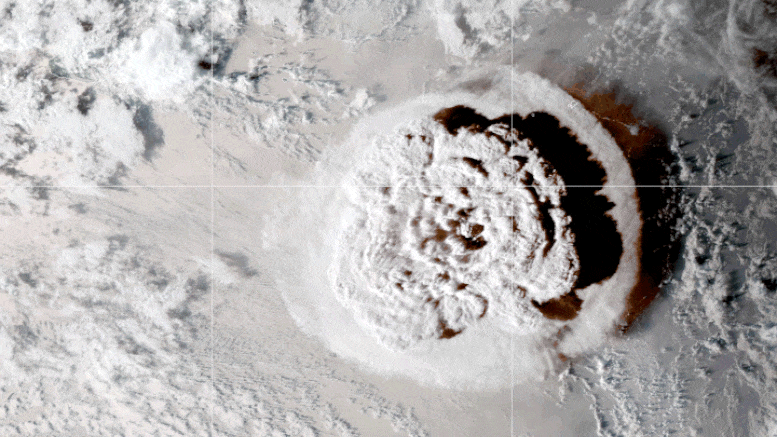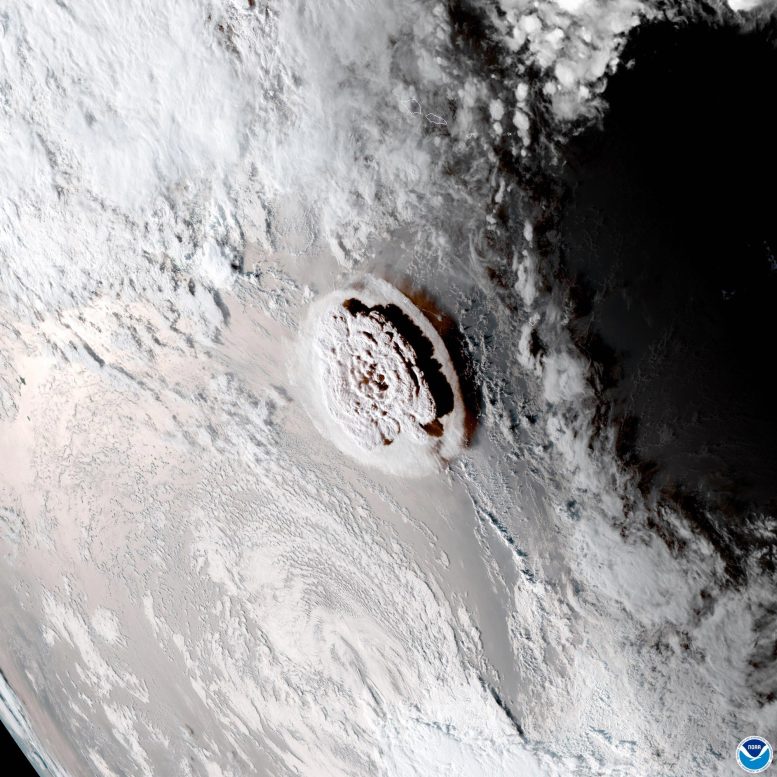
The 2022 Hunga eruption in Tonga highlighted the destructive potential of underwater volcanic flows, severing undersea cables and transforming the seafloor, with risks extending over 100 km from the eruption site.
In 2022, the submerged Hunga Tonga–Hunga Ha’apai volcano erupted, triggering a fast-moving and destructive underwater debris flow. This event severed telecommunication cables and reshaped the surrounding seafloor. The findings from this eruption are among the first field studies to document the effects of large volumes of volcanic material released directly into the ocean. They offer new insights into the behavior and hazards associated with submerged volcanoes.
Understanding Underwater Volcanic Eruptions
Explosive volcanic eruptions on land generate pyroclastic flows composed of hot ash and rock. When these flows reach the ocean, they can cause damaging tsunamis, surges, and turbidity currents, posing threats to underwater infrastructure and marine ecosystems. Although most of Earth’s volcanoes are underwater, explosive underwater eruptions remain poorly understood, which limits knowledge of the risks they pose.

Research Findings on Hunga Eruption
Michael Clare and colleagues have sought to fill this knowledge gap by analyzing the underwater volcaniclastic flows from the 2022 Hunga eruption in Tonga. This event destroyed nearly 200 kilometers of vital subsea telecommunications cables. The team’s research combined data from the timing and extent of cable breaks, bathymetric surveys, eruption observations, and rock core sampling. Their analysis revealed that the material ejected during the Hunga eruption collapsed vertically and directly into the ocean and formed an exceptionally fast and highly destructive underwater debris flow.
According to their findings, the submarine density current traveled over 100 kilometers across the seafloor at speeds reaching up to 122 kilometers per hour (76 miles per hour). Additionally, these volcanoclastic currents dramatically altered the seafloor around the Hunga volcano, creating scours and channels deeper than 100 meters (330 feet) in the seabed. These types of landforms, observed around many submerged volcanoes, indicate that significant underwater flows have occurred during major eruptions at other locations worldwide.
Significance for Future Risk Assessment
“Ultimately, the Hunga volcano will be a vital case study for better understanding the risk that undersea and shallow-water volcanoes pose to the submarine environment and critical seafloor infrastructure,” write Rebecca Williams and Pete Rowley in a related Perspective.
Reference: “Fast and destructive density currents created by ocean-entering volcanic eruptions” by Michael A. Clare, Isobel A. Yeo, Sally Watson, Richard Wysoczanski, Sarah Seabrook, Kevin Mackay, James E. Hunt, Emily Lane, Peter J. Talling, Edward Pope, Shane Cronin, Marta Ribó, Taaniela Kula, David Tappin, Stuart Henrys, Cornel de Ronde, Morelia Urlaub, Stefan Kutterolf, Samuiela Fonua, Semisi Panuve, Dean Veverka, Ronald Rapp, Valey Kamalov and Michael Williams, 7 September 2023, Science.
DOI: 10.1126/science.adi3038